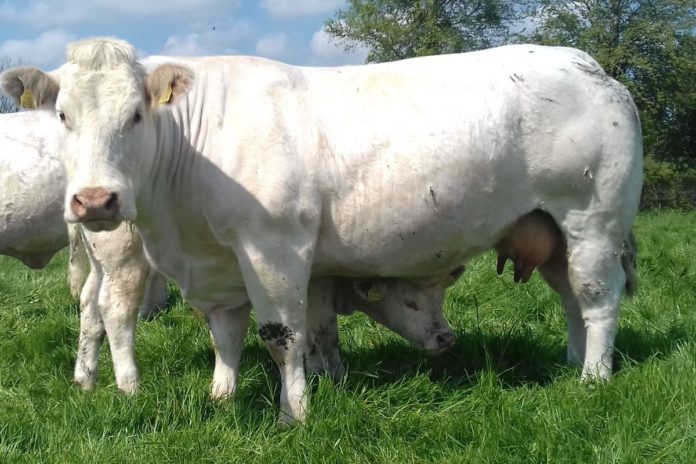The Suckler Carbon Efficiency Programme (SCEP) contains “much more” ambitious targets than its successor, the BDGP, the Department of Agriculture, Food, and the Marine, has confirmed.
The scheme carries a budget of €260m across the programme’s five years. Like BDGP, the DAFM will make payments on land instead of animals.
It has a payment rate of €225/Ha for the first 15 eligible hectares and €180 for each remaining eligible hectare.
You can calculate the maximum payment area by dividing the reference figure by 1.5 LU/Ha.
SBLAS membership
One of the main differences between BDGP and SCEP is Bord Bia SBLAS membership.
Under BDGP, farmers were required to complete a carbon navigator in year one with a farm advisor’s help and update it annually through the scheme.
As per SBLAS membership, a sustainability audit will replace this measure in the new suckler scheme.
The DAFM has confirmed that farmers must be a member before applying for the Suckler Carbon Efficiency Programme.
During the DAFM’s Common Agricultural Policy Draft Strategic Plan 2023-2037 publication information meetings, a member of the DAFM said:
“This needs to be in place before you apply for the SCEP. I know that with schemes we had in the past, we have had a grace period where people could apply a scheme and then sort out their Bord Bia afterwards, but in this instance, Bord Bia has to be there from the beginning.”
“You need to have your application in and surveys done and be accepted into the scheme before making your application under the SCEP.”
BISS application, calving targets, and training
Separate from this, farmers will have to submit a BISS application each year on which all their lands are declared for the SCEP’s duration.
Furthermore, farmers must calve down at least 50% of the reference number of animals every year.
Also, SCEP participants will have to attend a half-day livestock handling course before the end of year two.
Furthermore, there will be mandatory training on implementing actions under the scheme in the contract’s first two years.
The DAFM confirmed that it will tailor this for new entrants unfamiliar with genomics requirements.
Historical reference years
The DAFM intends to have a historical reference year(s), which it stated will “provide a ceiling” for payment.
The DAFM stated that “there will be scope to reduce numbers without penalty each year”.
For BDGP, the reference year was 2014, and 2015 was the reference year for new entrants.
For the SCEP, when “making the application for the SCEP, you will be presented with suckler calving data from 2016 to 2021 inclusive”.
“You will select three years, from which we will then calculate an average. This will then become your scheme reference figure.”
“There will be an ability each year to amend that reference figure downwards to reduce numbers to match decisions that you have made on the holding. Perhaps, you lost land or want to diversify into another area.”
“This allows you the flexibility to amend your reference figure each year going forward. Under BDGP, that facility was not there.”
“Some people removed themselves from the scheme, whereas, with this ability, we feel it is less of a penalty for farmers, where they can amend as they go along.”
For farmers who do not have data for 2016-2021 inclusive, the DAFM will regard them as new entrants. In this case, they will declare a target for 2023 at the application stage.
Actions:
Similar to the BDGP, farmers must carry out a number of actions under the scheme:
- Replacement strategy;
- Weight recording;
- Genotyping;
- Data recording.
Replacement strategy: Covers dams and sires.
Sires:
- Years 1 & 2: 80% of calves produced on the holding must come from a 4/5-star sire;
- Increases to 85% in year 3 & 4;
- Increases to 90% in year 5.
Dams:
- Years 1 & 2: 50% of reference figure: Dams retained on holding must be 4/5-star;
- Increases to 65% in year 3 & 4;
- Increases to 75% in year 5.
- Weight recording:
Weigh at 70% of the ref number of animals on the holding every year and submit data by November 1st, annually.
- Genotyping:
At least 70% of the reference number of animals on the holding must be genotyped each year of the programme without repetition.
- Data recording:
Participants must provide a range of data through animal events, records, and surveys.





